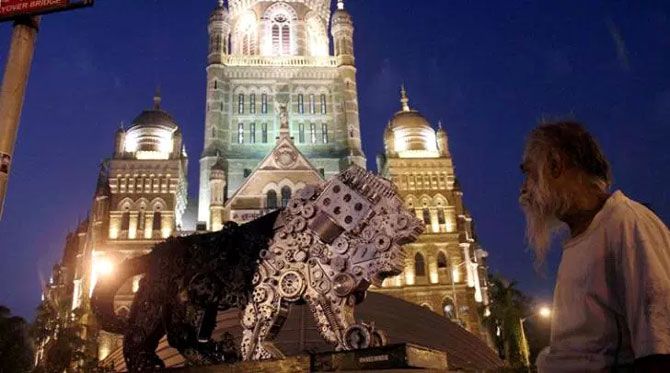Columnist A K Bhattacharya wonders why is it that the value of investment proposals in 2015 declined by 23 per cent, but the number of jobs to be created through such investments actually went up by 12 per cent.

The week-long Make In India programme held in Mumbai in February 2016 had promised an investment of over Rs 15 lakh crore in the entire country. Of this, an estimated Rs 8 lakh crore was to be invested in Maharashtra alone.
Organisers of the programme, which was aimed at promoting investments to boost the manufacturing sector in particular, also announced that more than three million jobs would be created in Maharashtra through such investments. No figure was, however, given on the likely number of jobs to be created as a result of the Rs 15 lakh crore of investments in the entire country.
It is clear from these assertions that policymakers expect creation of jobs to be one of the main benefits of higher investments. This is not surprising. Questions are bound to be asked about the effectiveness and sustainability of such an investment promotion programme if it leads only to higher growth without creating jobs. This is particularly so in a developing economy like India where every year millions of new job seekers are entering the market.
So, how have investments done in the two years of the Narendra Modi government and how many jobs were expected to be created? The Department of Industrial Policy & Promotion maintains data on investments and jobs they are supposed to create on a calendar year basis. In 2013, investments proposed were estimated at Rs 5.3 lakh crore, which showed a seven per cent decline over investments in the previous year.
The investment trends in 2014 and 2015 were disastrous. In 2014, only seven months of which had seen the rule of the Modi government, investment proposals fell by over 23 per cent to Rs 4 lakh crore. And in 2015, they saw another drop of 23 per cent to Rs 3.11 lakh crore.
The first three months of 2016 have not brought much cheer either. Investment proposals were estimated at Rs 60,130 crore. If the trend in the first quarter of 2016 is maintained in the remaining three quarters, investments could well see a further fall in the whole of 2016. This is not a healthy sign.
A look at the major states and the investment proposals for them reveals a more disturbing trend. As many as five large states had seen an increase in the value of investment proposals in 2015 over that in 2014. These were Gujarat, Karnataka, Madhya Pradesh, Tamil Nadu and West Bengal. But in the first quarter of 2016, all of them are showing a trend suggesting a decline.
Chhattisgarh, Maharashtra, Odisha and Uttar Pradesh saw a decline in investment proposals in 2015, compared to 2014 and the declining trend would continue in 2016 if the numbers for the first quarter of the year are an indication. Andhra Pradesh is the only large state that after a decline in investment proposals in 2015 looks set to bounce back with higher investment intentions in 2016.
What about jobs to be created through these investment proposals? These numbers spring a surprise. Jobs to be created through investments in 2013 were estimated at one million, recording a 48 per cent jump over the previous year.
However, in 2014, the new jobs estimate dropped by 57 per cent to just about 453,000. But in 2015, the numbers began to rise - by about 12 per cent to a little over half a million. And it seems that even though investment trends for the first quarter of 2016 are not very positive, the number of jobs to be created in this period is rising at a good pace.
These are important signals for those tracking investments in the Indian economy. Why is it that the value of investment proposals in 2015 declined by 23 per cent, but the number of jobs to be created through such investments actually went up by 12 per cent?
Some explanation would be available from the specific sectors in which investments were proposed to be made, since job requirements do vary from industry to industry. But there certainly is a need for closer examination to understand the real state of jobs creation that fresh investments are expected to bring about.
At the end of the week-long Make In India programme in Mumbai in February, it was pointed out by government officials that the three million new jobs through an investment of Rs 8 lakh crore in Maharashtra would be created over a period of 18 to 36 months. The feasibility of these numbers will be clearer if there is proper scrutiny of government data on new investment proposals and jobs these would create in the last few quarters.
Image: An installation of the 'Make in India' logo at Chhatrapati Shivaji Terminus in Mumbai. Photograph: PTI











